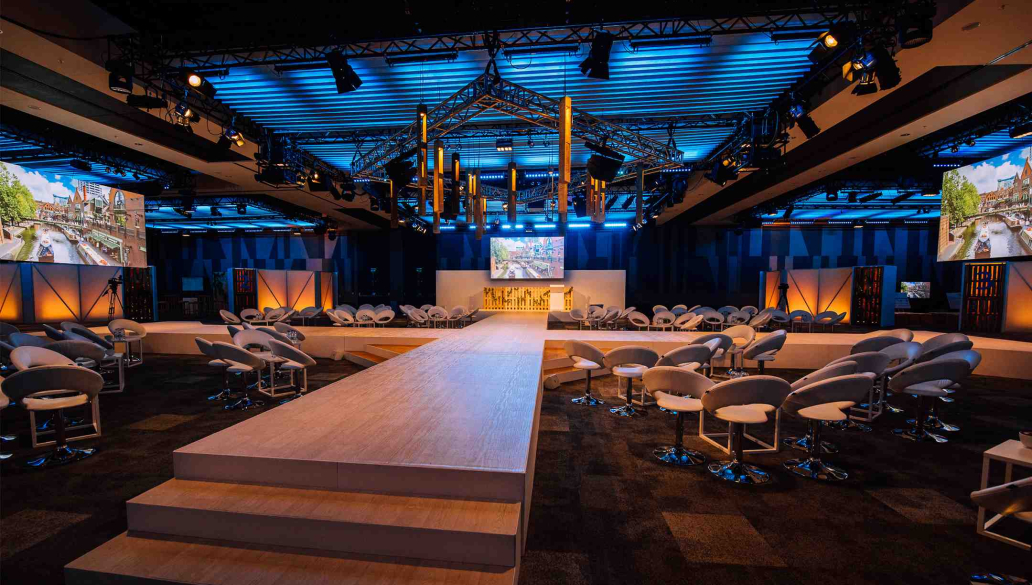Facts
Location
Hertfordshire, United Kingdom
Nemetschek Group Brands
Vectorworks
Client
Stagestruck
Technology used
Vectorworks Spotlight
Switching from AutoCAD to Vectorworks
Stagestruck started as a technical production company but quickly developed into a full-service agency, mostly serving the corporate events market. With 80 full-time team members, the firm coordinates everything themselves, including concept, design, documentation, and production. They’ve been operating for over 35 years.
To successfully plan and execute an event, Stagestruck must rely on effective collaboration — both with the client and internally.
“There are a number of different people involved in any design process we undertake,” said Tom Cordory, head of technical project management at Stagestruck. “We have a team of event producers and technical production managers. Then we have our design team, set construction team, technical team, and content team. We work together through the end to end process from initial design through to delivery.”
Among the different teams, 20-25 of Stagestruck’s employees used a mix of different CAD software: primarily AutoCAD, along with Revit, 3ds Max, Cinema 4D, and SketchUp. However, as their business grew, the firm realised they needed an all-in-one program to better suit their collaboration needs and to streamline their workflow.
They decided to make the switch to Vectorworks.
“We're still very much in the implementation, learning, and development phases” said Cordory. “At the moment, we're in the crossover between AutoCAD into Vectorworks."
Tom Cordory, Head of Production at Stagestruck
"We have stopped starting new projects in AutoCAD. Everything's being done in Vectorworks."
The Story Behind the Switch
Before switching to Vectorworks, Stagestruck operated across a number of different platforms to create quality designs for their clients. At times this posed challenges to both efficiency and productivity, and Cordory knew they had to find a way to make projects easier to execute for all teams involved. He didn’t want to take that decision lightly.
“The whole process started when we were looking to switch over to a 3D package,” Cordory said. “We'd been working mostly in 2D AutoCAD and creating separate plan and elevation drawings, and that process seemed a little bit silly to us to just be working 2D. It also opened the door for errors.”
Previously, if they updated an elevation drawing and not the plan document, or vice versa, they could potentially run into problems with their drawings. They needed to find a new 3D package.
“We did quite a lot of comparisons and testing between Vectorworks and Revit, because, obviously, moving from AutoCAD onto Revit is quite a simple process because it has a very similar workflow” Cordory said. “It was almost creating a checklist to say, okay, what can Revit do? What can Vectorworks do? What's the comparison?”
From the results of this structured vetting process, Vectorworks appeared to be on par with Revit for everything Stagestruck needed, in terms of working from 2D to 3D, so once they started to work more intimately with the software, they were quite comfortable making the switch.






